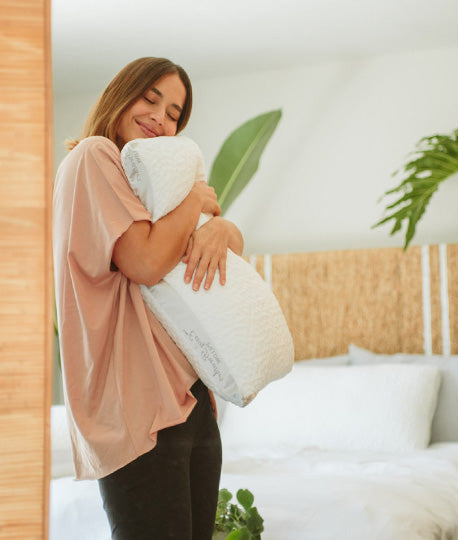Creating an Allergen-Free Sanctuary: Tips for Reducing Allergens in Your Home

Allergens are pervasive, microscopic troublemakers that can turn our homes into battlegrounds for those sensitive to them.
Whether it's pollen, dust mites, pet dander, or mold spores, these allergens can trigger uncomfortable symptoms such as sneezing, itching, watery eyes, and even respiratory issues. Fortunately, with some strategic steps, you can create a haven from allergens within the walls of your home.
Let's explore some effective strategies for reducing allergens and creating a healthier living environment.
-
Regular Cleaning Regimen: Start with the basics – a consistent cleaning routine. Dust, vacuum, and mop your floors regularly to remove allergens that settle on surfaces. Use a vacuum cleaner equipped with a HEPA filter to trap even the smallest particles. Don't forget to clean upholstery, curtains, and bedding frequently as well.
-
Control Indoor Humidity: Dust mites and mold thrive in humid environments. Keep indoor humidity levels between 30-50% to deter their growth. Consider using a dehumidifier in damp areas like basements and bathrooms, and make sure your HVAC system is properly maintained to prevent mold buildup in air ducts.
-
Invest in Allergen-Proof Bedding: Your bed can be a hotspot for allergens, especially dust mites. Encase mattresses, box springs, and pillows in allergen-proof covers to create a barrier between you and these microscopic pests. Wash bedding in hot water weekly to kill dust mites and remove allergens.
-
Minimize Indoor Plants: While indoor plants can beautify your space, they can also harbor mold in their soil and produce pollen. If you're prone to allergies, opt for plants with low pollen production like ferns, palms, or succulents. Be diligent about maintaining good airflow around plants and regularly clean their pots to prevent mold growth.
-
Pet Care: If you have pets, their dander can be a significant source of allergens. Bathe and groom your furry friends regularly to minimize shedding and dander accumulation. Designate certain areas of the house as pet-free zones, especially bedrooms, to reduce exposure to allergens while sleeping.
-
Air Purification: Consider using air purifiers with HEPA filters to remove allergens from the air. Place them in commonly used rooms, especially bedrooms and living areas, to ensure you're breathing cleaner air. Additionally, regularly replace air filters in your HVAC system to prevent recirculating allergens throughout your home.
-
Limit Carpeting: Carpets can trap allergens like dust, pet dander, and pollen, making them difficult to remove completely. Consider replacing carpets with hard flooring options like hardwood, tile, or laminate, which are easier to clean and less hospitable to allergens.
-
Regular Ventilation: Proper ventilation is crucial for maintaining good indoor air quality. Open windows and doors when weather permits to let fresh air circulate throughout your home. Use exhaust fans in bathrooms and kitchens to remove excess moisture and prevent mold growth.
-
Allergen-Free Cleaning Products: Choose cleaning products labeled as "allergen-free" or "hypoallergenic" to minimize exposure to harsh chemicals that can exacerbate allergies. Alternatively, make your own cleaning solutions using natural ingredients like vinegar, baking soda, and essential oils.
-
Consult an Allergist: If you or your family members suffer from severe allergies, consider consulting an allergist for personalized advice and treatment options. They can conduct allergy testing to identify specific triggers and recommend appropriate medications or immunotherapy to manage symptoms effectively.
Creating an allergen-free home requires dedication and consistent effort, but the rewards are well worth it – improved indoor air quality, reduced allergy symptoms, and a healthier living environment for you and your loved ones.
By implementing these strategies, you can transform your home into a sanctuary where allergies are kept at bay, allowing you to breathe easier and enjoy greater comfort and well-being.




